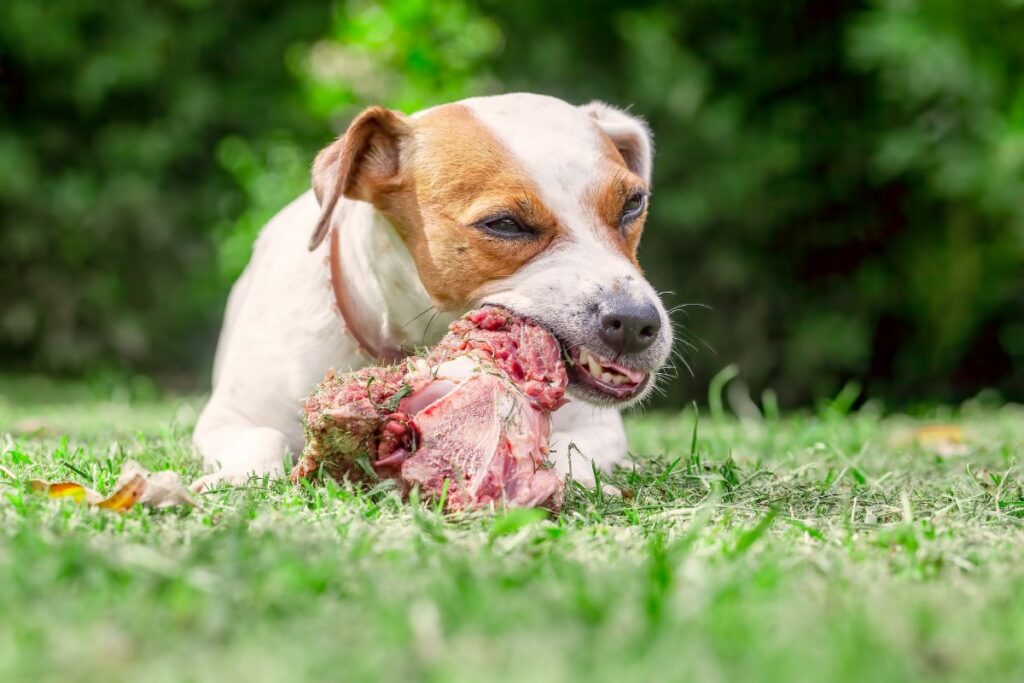Have you ever wondered why dogs wag their tails? It's not just a simple gesture; it's their way of speaking to us through body language. In this article, we dive into the meaning of tail wagging and how different positioning and context can help you understand what is being communicated.
If you're a dog owner or simply fascinated by our furry friends, you've likely observed the enigmatic phenomenon of tail wagging. It's a quintessential aspect of a dog's body language and a form of communication that goes beyond barking and whimpering. This article will unravel the mysteries behind why dogs wag their tails, exploring the various reasons, the chemistry behind it, and even delving into some intriguing behaviors like tail wagging while sleeping.
Communicating Emotions Through Tail Wagging
Dog tail wagging is a complex form of communication that can convey a wide range of emotions. Understanding the nuances of tail positions and movements is essential for interpreting a dog's feelings accurately.
Before we dive into specific tail positions or movements, its important to understand two fundamental truths:
- What constitutes a neutral, relaxed tail position will vary by breed. For example, a German Shepherd Dog’s (GSD) neutral tail position is low, nearly resting on one rear leg, while an Akita or Pug’s neutral tail position is curled up over its back. The content below will act as a general guide, but each position should be relative to the dog’s neutral state.
- A wagging tail does not always mean a dog is happy or sociable. More accurately, a wagging tail is an indication that a dog is willing to engage. A willingness to engage is usually a good thing, signaling that a dog wants to play or get belly rubs, but in some cases, engagement can mean aggression. It is important not to make any assumptions based on a wagging tail alone and look at the rest of the body to determine a dog’s intent.
Tail Position Relative to the Spine
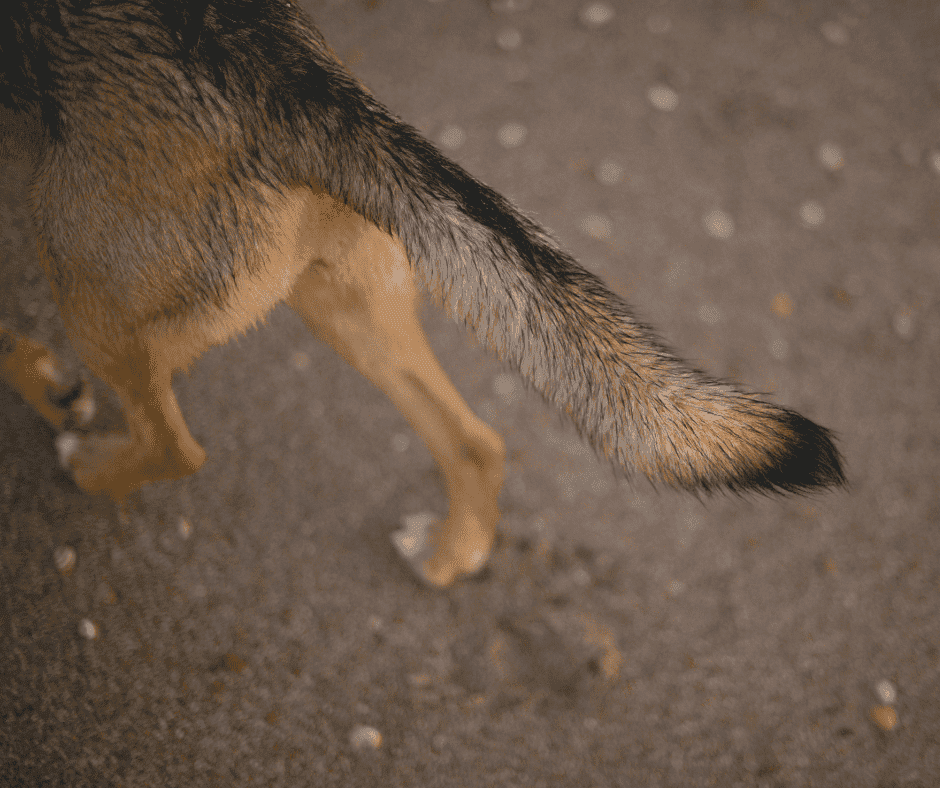
Tail Level with Spine
This position is generally considered a neutral but engaged position. The dog is comfortable but interested in their environment. Of course, this is breed specific as mentioned above.
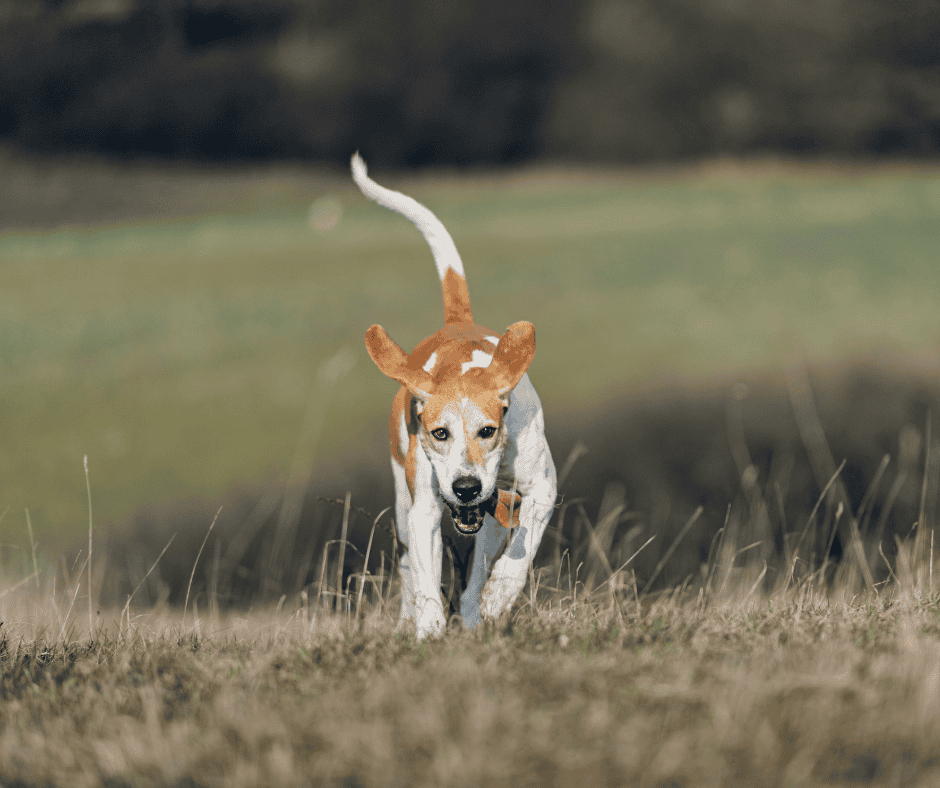
Tail Above Spine
The higher the tail is above the spine, the higher the arousal level. A tail above the spine indicates alertness. The dog is engaged with something in the environment. When looking strictly at the tail, all we can say about a high tail is that there is high arousal, but without the rest of the body language and environmental context, it is not possible to know what that arousal is – It could be play arousal, anticipation or growing awareness or growing concern over something.
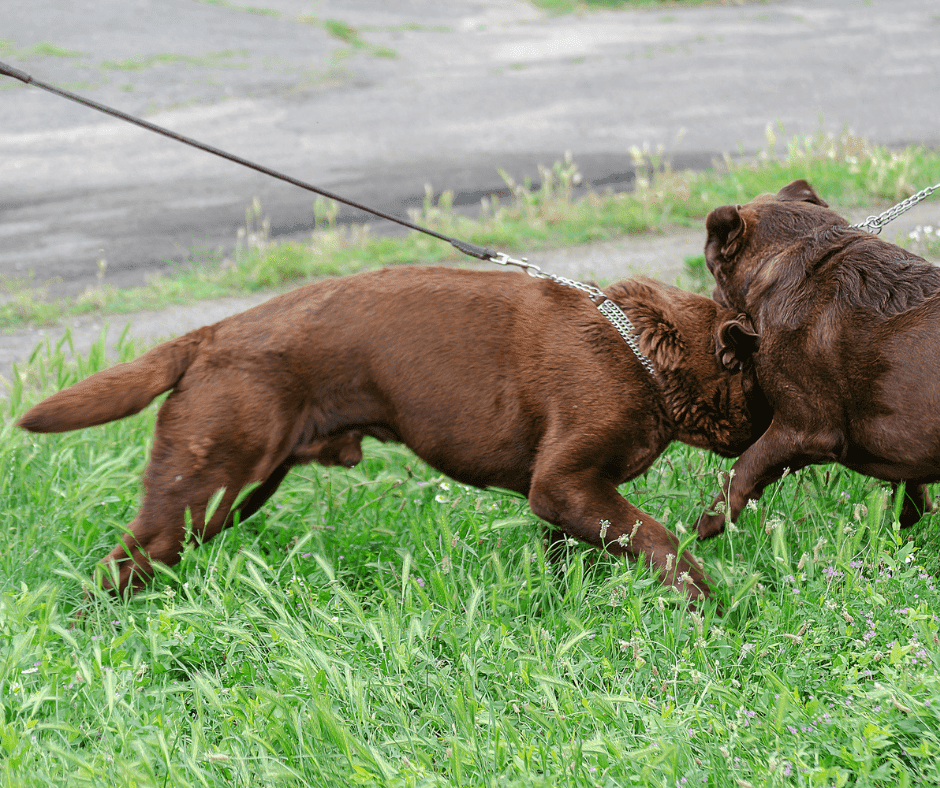
Tail Below Spine
The lowered tail (relative to a breed’s natural position) may be relaxed, it may be normal neutral for that dog, or it may be indicator of mild stress.
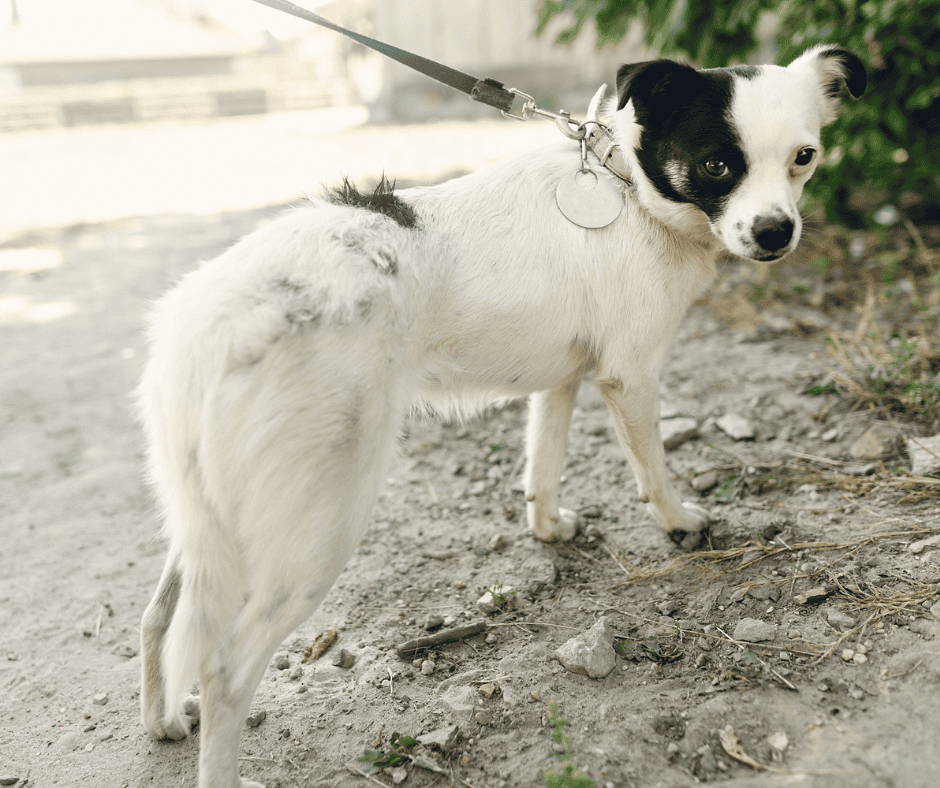
Tucked Tail
The greyhound dog’s neutral tail position is often down and tucked slightly between their legs. For most dogs, however, a tail tucked between the legs indicates fear. When the tail is down like this it covers the anus and genitals, reducing the ability of scent to carry, and thus making the dog less “obvious” to those around them. The exaggeration of the tuck is a consistent indicator of the intensity of the fear the dog is experiencing.
Different Types of Wags
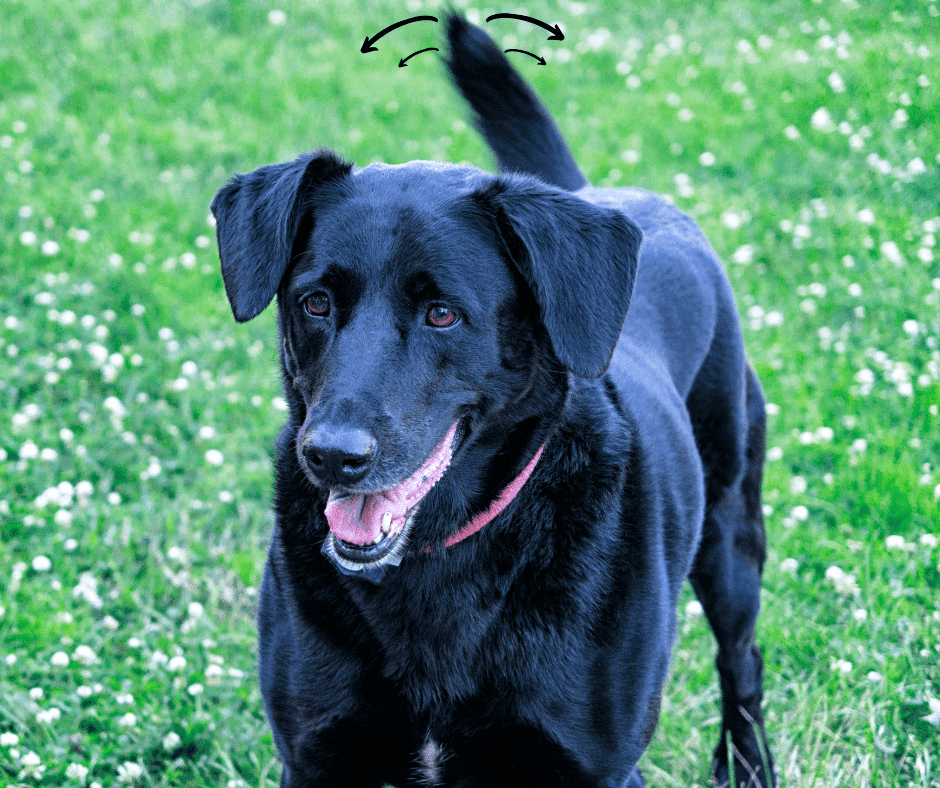
Tip of Tail Wagging, Short Wavelength
The less of the tail that is involved in motion, the less comfortable the dog is. If just the tip of the tail is moving, or the tail is moving in a very short left-right wavelength, it indicates growing arousal and may indicate nervousness or uncertainty. For just the tip of the tail to be in motion, the rest of the tail must be stiff. This stiffness is a sign of mild arousal or stress.
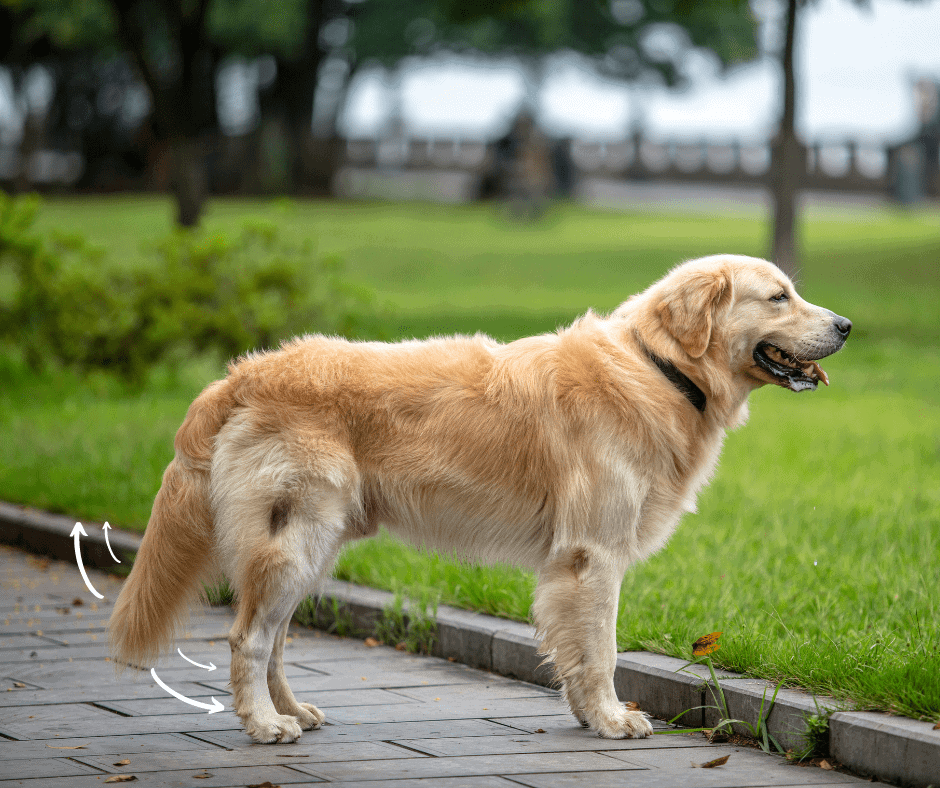
Low Tail, Wagging Slowly
This typically indicates a dog who is nervous, insecure, and untrusting. The low, wagging tail may be an appeasement behavior and an effort to reduce tension and avoid conflict. The stiffness of the tail is important to note because many breeds carry their tail low. If the tail is moving low and slow and is stiff, the dog is more likely nervous, but if it is low and loose, then the dog may just be relaxed.
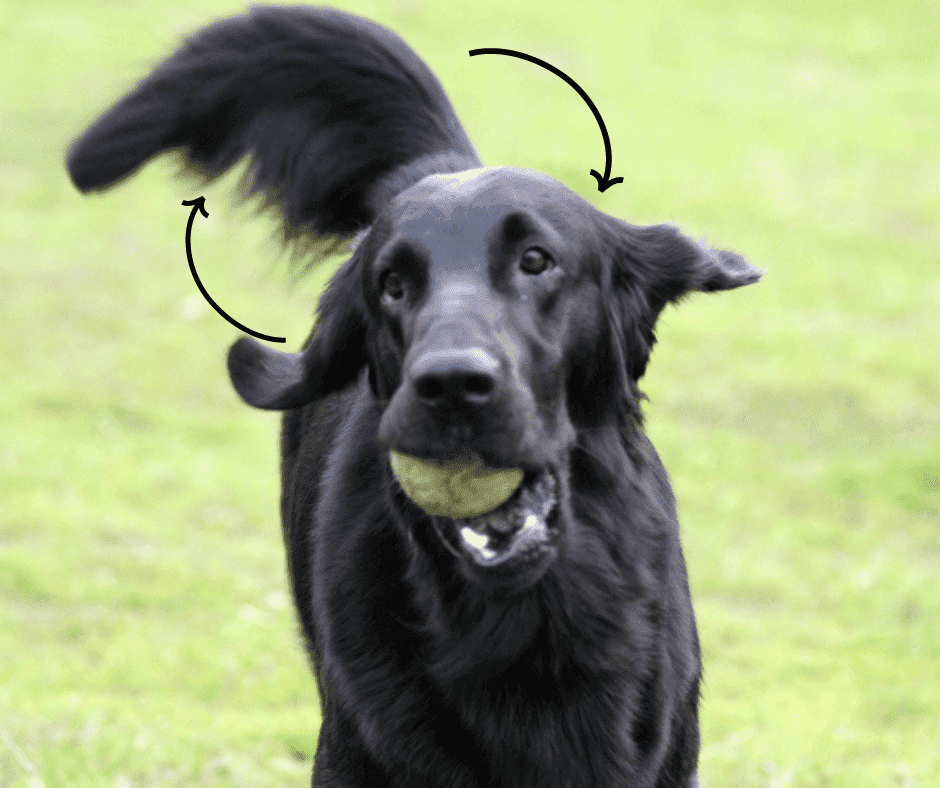
Helicopter Tail
Sometimes dogs are so excited that their tail wags every which way. It fluctuates from left/right to up/down and in doing so sometimes looks like it’s wagging in a circle. This is commonly referred to as helicopter tail because it starts to look like the vertical tail propeller on a helicopter.
A dog showing helicopter tail is highly aroused. Many people associate this with extreme happy excitement such as when the dog’s person comes home from work. It is important to keep in mind that helicopter tail does not tell us about emotion. It only tells us about arousal. Many a fearful dog has shown helicopter tail while barking defensively at strangers. And many dogs have shown helicopter tails while attacking a human or other dog.
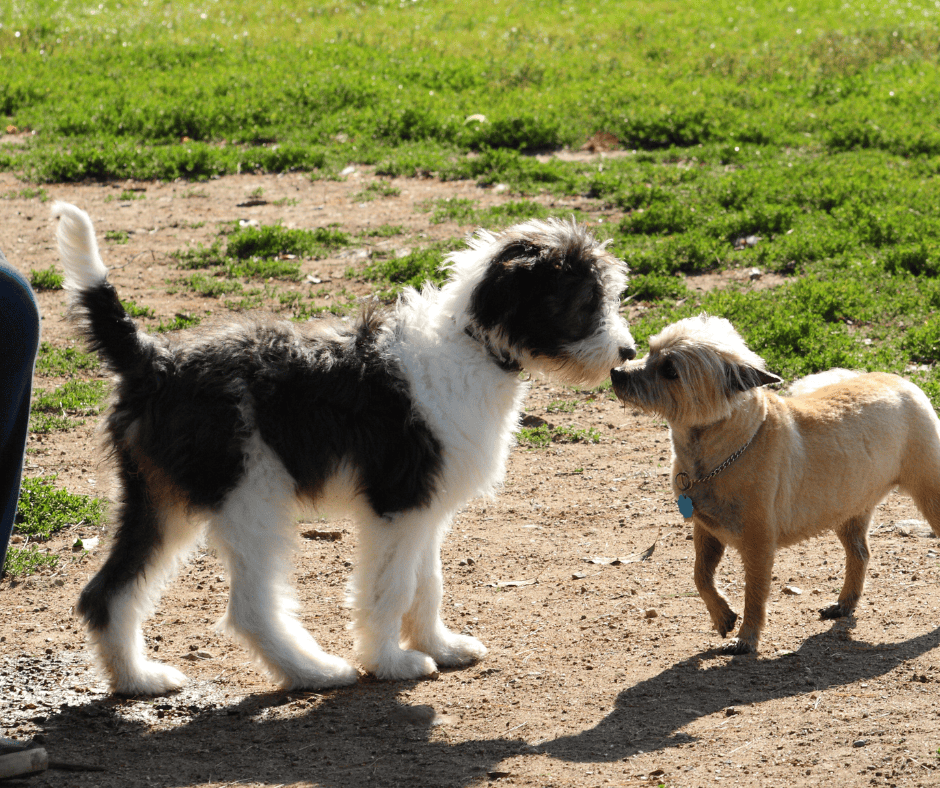
Flagging Tail
Tail high over spine, possibly all the way to a ‘pointing’ position where the tip of the tail points over the back in same direction as the head. The tail may be still or vibrating like a rattle snake tail. This indicates high arousal, extreme focus/alert, potential for charge or attack.
The Chemical Significance
Now that we've explored the visual aspect of tail wagging, let's dive deeper into the chemical underpinnings of this behavior. Believe it or not, there's more to tail wagging than meets the eye.
Oxytocin: The Love Hormone
Oxytocin is a hormone often associated with bonding and social interactions. Recent studies have shown that not only do dogs experience an increase in oxytocin levels when they interact positively with their owners, but humans do too. When a dog wags its tail in response to our presence, it can trigger a release of oxytocin in both the dog and its owner.
This oxytocin feedback loop contributes to the strong bond between dogs and humans. It's the same hormone released during breastfeeding and other intimate social interactions, emphasizing the deep emotional connection between us and our furry companions.
Cortisol: The Stress Hormone
Conversely, cortisol is the hormone associated with stress and anxiety. In situations that make a dog feel uncomfortable or threatened, cortisol levels rise. This increase in stress hormones can lead to various physical and behavioral responses, including changes in tail position and movement.
Understanding the interplay between oxytocin and cortisol helps us interpret a dog's tail wagging more accurately. If a dog's tail wags vigorously in a relaxed environment, it's likely a positive sign. However, if the tail wags nervously or alongside other signs of stress, such as panting or trembling, it may indicate discomfort.
The Mysterious Tail Wags in Sleep
While we're accustomed to seeing dogs wag their tails while awake, some dogs exhibit the peculiar behavior of tail wagging while asleep. This phenomenon has intrigued dog owners and researchers alike. But why do dogs do this?
Theories Explaining Tail Wagging in Sleep
- Dreaming of Play: Dogs often dream during REM (rapid eye movement) sleep, just like humans. During these dreams, they may reenact activities they enjoy, such as playtime. Tail wagging while asleep could be a reflection of their dreams, where they're happily chasing a ball or interacting with their favorite humans.
- Subconscious Communication: Dogs are known for their acute senses and ability to pick up on subtle changes in their environment. It's possible that while they sleep, they sense or hear something pleasant, like the approach of their owner, and respond with a wagging tail.
- Muscle Memory: Tail wagging is a reflexive action for dogs, and it's deeply ingrained in their muscle memory. During sleep, their brain might send signals that trigger tail movements as part of their dreams or subconscious responses.
While these theories offer some insights, tail wagging during sleep remains somewhat of a mystery. It's a reminder of the complex and multifaceted nature of canine behavior.
Common Misconceptions
Before we move on to some intriguing aspects of tail wagging, let's address some common misconceptions about this behavior.
While a vigorously wagging tail often signifies happiness, it's essential to consider the context. A dog can also wag its tail when anxious, agitated, or fearful. Therefore, it's crucial to assess the dog's overall body language to determine its emotional state accurately.
Tail wagging is not a one-size-fits-all language. Different types of wagging can convey varying emotions. The speed, direction, and height of the tail all play a role in interpretation.
While a tucked tail can indicate fear or submission, it can also signify discomfort or pain. It's essential to consider the dog's overall demeanor and context when evaluating this gesture.
Dogs can wag their tails for various reasons, including excitement, anxiety, or even annoyance. Interpreting their tail language accurately requires a holistic understanding of their emotional state.
Different breeds and individual dogs have unique tail-wagging styles. What may be a friendly wag in one breed could be a sign of anxiety in another. It's essential to know your dog's typical tail behavior to understand their emotions better.
In conclusion, the question of why dogs wag their tails goes beyond simple curiosity. It's a crucial aspect of canine communication, allowing dogs to express their emotions, needs, and desires. By understanding the anatomy, chemistry, and evolution behind tail wagging, we can forge deeper connections with our furry companions.
Remember that tail wagging is just one part of a dog's complex body language. To interpret it accurately, consider the context, the dog's overall demeanor, and any other signs of arousal or emotion.
So, the next time you see a dog wagging its tail, take a moment to appreciate the rich and nuanced language it represents. It's a testament to the unique bond between humans and dogs, forged over thousands of years of coexistence.

Joseph Schifano is the President of The Academy of Pet Careers and Founder of DogNerdly.
With over 20 years of professional pet experience, Joseph got his start as an owner/operator of a 7-figure, all-inclusive pet care business. From there, he purchased The Academy of Pet Careers with a hopes of improving the quality of care provided by industry professionals. This role allowed Joseph to rub shoulders with some of the biggest names in the industry, and gain knowledge in every aspect of pet care.
After witnessing the popularity of social media influencers and the amount of misinformation being taught to pet parents, Joseph decided to create DogNerdly. The goal was to provide science-backed education for the average dog nerd in order to create a world where dogs and humans can live a more harmonious and empowered lifestyle.



